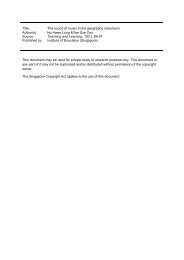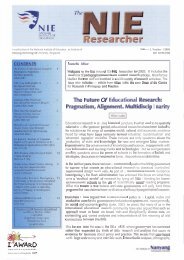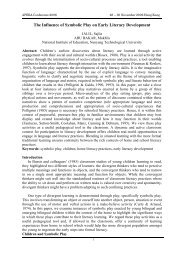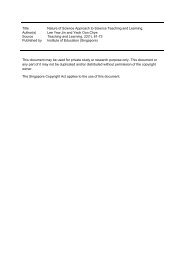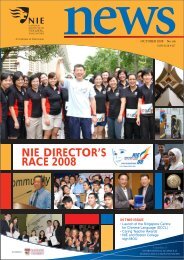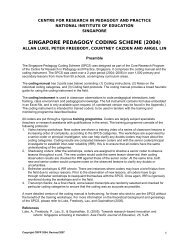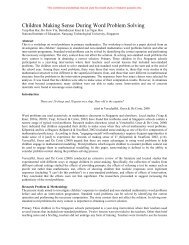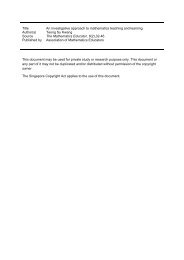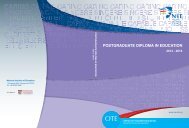Classroom interaction analysis techniques for classroom teachers ...
Classroom interaction analysis techniques for classroom teachers ...
Classroom interaction analysis techniques for classroom teachers ...
Create successful ePaper yourself
Turn your PDF publications into a flip-book with our unique Google optimized e-Paper software.
Redesigning Pedagogy 2011 4so as to preserve sequence, and tabulated systematically in order to represent a sample of thespontaneous teacher influence. In using the FIAS, we tried to provide an answer to the question ofhow a teacher can obtain objective in<strong>for</strong>mation about his <strong>classroom</strong> behaviour, which is rich enoughand clear enough to guide his steps towards self-directed improvement. Teachers may benefit fromthe chance of examining whether the observed in<strong>for</strong>mation is consistent or inconsistent with theirown intentions, and make proper decisions of change afterwards.CategoriesFIAS provides ten categories to classify <strong>classroom</strong> verbal behaviours, as shown in table T1 * .These ten categories classify verbal events in class into three groups, namely, teacher’s talk, studentresponse and the silent moments. The categories of teacher’s talk can also be clustered into twogroups, indirect influence and direct influence, which would partially depict the teaching style of ateacher.Teacher’s talk: indirect influence1. Accept FeelingTeacher accepts and clarifies the feeling tone of the students in a non-threatening manner.Feelings may be positive or negative also includes predicting or recalling feelings.2. Praises or EncouragesTeacher praises or encourages student action or behaviour. Jokes that release tension but notat the expense of another individual, nodding head, or approval are included.3. Accepts or Use Ideas of StudentsTeacher clarifies, builds or develops ideas suggested by a student. As teacher states more ofhis ideas, the category shifts to lecturing.Teacher’s talk: direct influence4. Asks questionsTeacher asks a question about content or procedure with the intent that a student answers.* The number in front of a category is nominal in nature, which represents a classification of event happened during theobservation but not the position on a scale.



